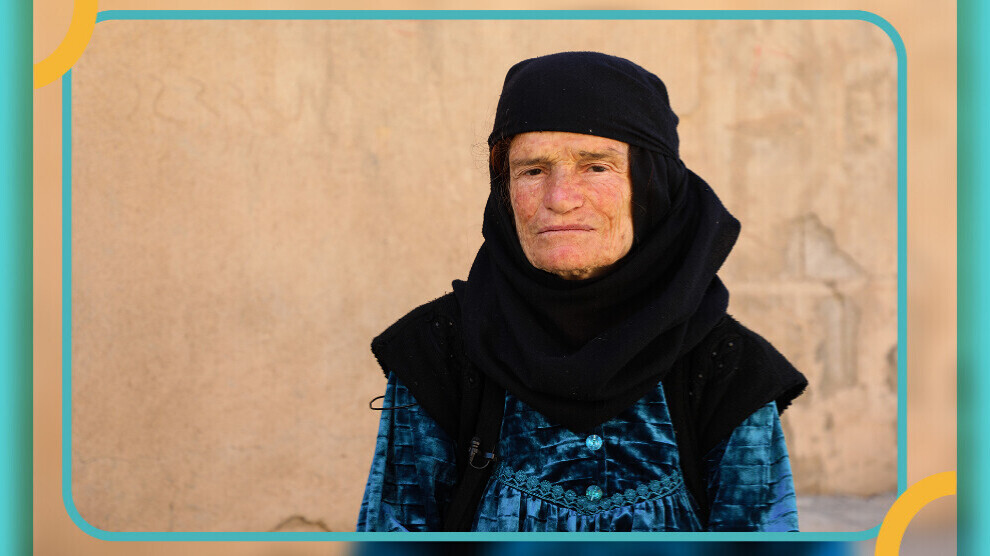Survivor of Anfal Genocide: Piroz Kerim Salih
Piroz Kerim Salih, who lost her three children and survived the Anfal genocide against the Kurds in the Germian region, says her pain is still fresh although 33 years have passed.

TEWAR PÊNCAWÎNÎ
Germian – The Anfal genocide, also known as the Anfal campaign, was carried out against the Kurds in Iraq by the Ba'athist regime on the orders of Saddam Hussein. In the genocide that began in 1986 and lasted until 1989, about 200,000 people, including children and women, were killed, approximately 4,500 villages were burned and more than one million people were forcibly displaced. The Anfal genocide had eight stages; the first stage in the Jafali Valley, the second stage in the Qara Dagh region, the third stage in the Garmian region, the fourth stage in the valley of the Little Zab, the fifth, sixth, and seventh stages in the valleys of Rawandiz and Shaqlawa and the last stage in the Badinan region. Undoubtedly, one of the heaviest attacks was conducted in the Germian region. Piroz Kerim Salih, a survivor of the third stage of the Anfal Genocide in the Germian region, told NuJINHA what she had witnessed.
The third stage of Anfal genocide was the worst stage of the eight stages. This stage is known as the “Dark Stage” among the Kurds. The Ba'athist regime forces took the control of Peybaz, Tilako, and Lilan; 50 villages and four towns were burned. Tens of thousands of people were sent to the Arar desert or prisons and burned alive. The bodies of thousands of people haven’t been found yet and many families have been still waiting for their children to return. On April 14, 1988, 5,000 people, including women, children, and disabled people, were taken from Mela Sur village to the Qurto police station and then to Nogursalman, Dibiz, and Topuzawa.
“A woman trying to reach her child was killed”
Piroz Kerim Salih is one of the survivors of the third stage of the Anfal genocide. She was born in 1958, in the village of Lafat Axa, located in the Germian region.
“Late afternoon, six young people went to the village and didn’t return. Then, the villagers learned that they had been kidnapped by the Ba'athist regime forces. Twenty-five days later, the Ba’athist army launched a ground operation and bombarded the village with warplanes. Four women stood by the river, three were able to hide, and one was killed in the bombardment while trying to reach her child,” Piroz Kerim Salih told us while talking about the attacks on her village.
“I covered my children in mud to hide them”
While talking about her three children who fell into the water and died, Piroz Kerim Salih felt sad. She told us what had happened on the day her children died as follows:
“When the bombardment began, I took my children to the river and covered their bodies in mud so that they would not be seen. My children were drowned in the river and I held their dead bodies. Then, I put their dead bodies on my other children to hide them from warplanes.”
“We had nothing to eat”
During the cold winter months, Piroz Kerim Salih and 45 people got on a tractor to go to a safer place and started a fire to warm up a bit, but the warplanes saw the fire, and they started bombing them.
“When we noticed the warplanes, we ran away from the fire to save ourselves. We had nothing to eat, even a piece of bread. We went to the surrounding villages and got some food from there.”
“We survived miraculously”
Stating that the Ba'athist regime forces transferred the citizens to the Duzxurmato Shabab School by using military vehicles, Piroz Kerim Salih said, “All citizens were executed there. Citizens who survived under the dead bodies were shot. Once we went to the riverside. We hid when we saw warplanes. We survived miraculously.”
